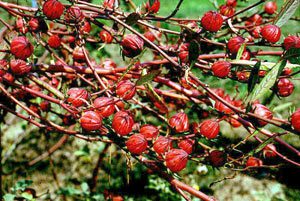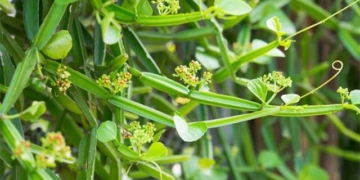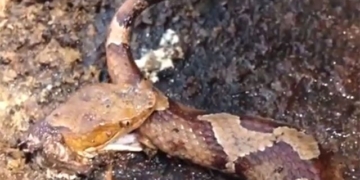From a plant native to Central America and North Africa, Master Mai Thi Tan – Director of Hapro Herbal Company has successfully propagated and hybridized hibiscus sabdariffa (commonly known as roselle) – a raw material used to create products such as tea, wine, and jams…
A Plant Grown on Sand
In 1992, recognizing the consumption potential in the Vietnamese market, a German professor introduced this plant for experimental cultivation at the Institute of Technical Science for Special Forest Products (now part of the Vietnam Forestry Science Institute). However, the professor’s idea gradually faded as the new variety was increasingly forgotten, and the scale of cultivation shrank over time.
 |
|
A Hibiscus Sabdariffa Plant |
As the concept of “roselle” diminished, Ms. Tan recognized the economic value of this rare plant. She began researching cultivation techniques and intensification methods to maximize yield.
After three years of monitoring the plant’s growth across various hilly regions and different soil types, she discovered that roselle is a short-lived shrub (about 6 months old), prefers sunlight, is easy to grow, and can thrive in poor, arid, hilly, sandy soils, and can even be intercropped with other plants… It is well adapted to the climate of Vietnam.
Having identified the plant’s characteristics, she researched and implemented methods to intensify cultivation, such as planting times, selecting varieties, planting density, fertilization regimes, pest control, drying, and storage techniques.
Speaking of the uses of roselle, she couldn’t help but feel proud: “Farmers can use the leaves and calyx to cook soups, braise fish, and eat fresh; the calyx can be made into beverages, candies, jams, wine, and food coloring; the seeds can be pressed for cooking oil and livestock feed… Additionally, raw materials from the plant can be processed into food, cosmetics, and extracts for medicinal purposes…“.
Market Challenges: Difficult!
In addition to its economic value, roselle also serves as an effective medicinal herb when used correctly. The substances found in the calyx have multifaceted effects such as anti-inflammatory, antibacterial, and digestive enhancement…
After successfully experimenting with cultivation, she invested in technology to transform raw products from roselle into everyday consumables. Hapro Wine – Herbal Joint Stock Company has successfully produced Hibiscus wine, primarily derived from the calyx of the roselle plant.
This calyx contains a deep red pigment rich in vitamins A, B1, C, E, and various other organic acids. Successfully extracting this red pigment from the roselle calyx has led to the creation of a delicious and nutritious Hibiscus wine, with flavors reminiscent of French Bordeaux. From this plant, her company has also successfully produced concentrated jams and infused teas with a uniquely delightful taste.
Thriving on diverse land and withstanding drought, it is evident that roselle has a bright “future” in Vietnam. However, what seems straightforward has become a source of concern for those committed to it. Ms. Tan asserts that she remains alone in her quest to find a market for products derived from roselle.
Currently, she tirelessly ventures into forests, travels to various localities, and is willing to invest her own money to introduce the “technology” of this economic plant, with the singular hope that people will pay attention to it and grant it the recognition it deserves.


















































